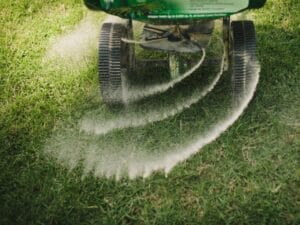
BY DANIELA GIRALDO – APRIL 22, 2024

In the vast expanse of Texas, where sprawling landscapes and vibrant communities flourish, maintaining a lush, green lawn is a point of pride for many homeowners. A well-manicured lawn not only enhances the aesthetic appeal of your property but also adds value to your home. Among the various aspects of lawn care, edging stands out as a crucial technique that can elevate the overall look of your lawn. In this comprehensive guide, we’ll delve into the art of edging and explore how Texas residents can achieve pristine edges that define the boundaries of their outdoor spaces.
Edging is more than just a cosmetic enhancement; it serves practical purposes that contribute to the health and longevity of your lawn. By creating distinct borders between the grass and adjacent surfaces such as sidewalks, driveways, and flower beds, edging helps prevent grass encroachment and weed proliferation. Additionally, well-defined edges give your lawn a polished appearance, showcasing its beauty and symmetry.
Texas’s diverse climate and soil conditions present unique challenges and opportunities for lawn care enthusiasts. From the humid coastal regions to the arid landscapes of West Texas, each locale requires tailored approaches to edging. Factors such as soil composition, grass type, and local ordinances governing lawn maintenance play significant roles in determining the most effective edging techniques.
To achieve professional-quality edges, it’s essential to invest in the proper tools and equipment. For basic edging along straight lines, a manual or powered lawn edger can provide precise results. However, for curved or intricate edges, a half-moon edger or a dedicated string trimmer with an edging attachment may be more suitable. Additionally, consider the power source (electric, gas, or battery-powered) and ergonomic features that align with your preferences and physical capabilities.

In Texas, edging efforts may face challenges such as compacted soil, invasive grass species, and fluctuating weather patterns. To overcome these challenges, incorporate the following strategies into your lawn care routine:
1. Aeration: Periodically aerate the soil to alleviate compaction and promote healthy root growth. Aerating before edging allows for smoother cuts and improves the overall health of the turf.

2. Selective Herbicides: Combat invasive grasses and weeds by applying selective herbicides that target specific species without harming desirable grass varieties. Be sure to follow label instructions and exercise caution to minimize environmental impact.

3. Seasonal Adjustments: Adapt your edging schedule and techniques to accommodate seasonal variations in grass growth and weather conditions. During periods of rapid growth, increase the frequency of edging to maintain pristine borders.

In the dynamic landscape of Texas, mastering the art of edging is essential for preserving the beauty and vitality of your lawn. By employing proper techniques, selecting appropriate tools, and addressing regional challenges, Texas residents can achieve immaculate edges that enhance the overall appeal of their outdoor spaces. Whether you’re a seasoned lawn care enthusiast or a novice homeowner, embracing the principles of edging will elevate your landscaping efforts and set the stage for a vibrant, healthy lawn year-round.
Share this post:
Check other topics that may help you get more insights for your project:





